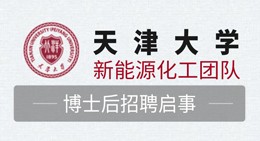Journal of Psychiatric Research ( IF 4.8 ) Pub Date : 2021-09-03 , DOI: 10.1016/j.jpsychires.2021.09.001 Liv Liebach Guttesen 1 , Nikolai Albert 2 , Merete Nordentoft 3 , Carsten Hjorthøj 4
Through imaging studies, a significant increase in cerebral activity has been detected in fronto-temporal areas in patients experiencing auditory verbal hallucinations. Therefore, non-invasive neuromodulation, in particular transcranial direct current stimulation (tDCS) and repetitive transcranial magnetic stimulation (rTMS), has been considered as a therapeutic intervention for medication-resistant auditory verbal hallucinations in schizophrenia. We aimed to synthesize results from randomized trials on either rTMS or tDCS versus placebo in patients with schizophrenia by including five recently published trials in the field. A systematic review and meta-analysis of relevant literature was conducted. Studies were included on the basis of pre-defined selection criteria. The quality of the studies was assessed by the Cochrane Risk of Bias Tool for Randomized Controlled Trials. RevMan 5.3 was used to conduct the statistical analysis. Including 465 and 960 patients, respectively, 12 tDCS and 27 rTMS studies were included. Regarding treatment of medication refractory auditory verbal hallucinations, no significant effect of tDCS (−0.23 [-0.49, 0.02], p = 0.08) or rTMS (−0.19 [-0.50, 0,11], p = 0.21) was found compared to sham in this meta-analysis. The current study found that it cannot be concluded that rTMS and tDCS are efficacious in treating medication-resistant auditory verbal hallucinations. Larger randomized controlled tDCS trials of a higher quality should be conducted in the future to establish substantial evidence of tDCS. The interventions appear safe and may have beneficial effects on other outcomes.
中文翻译:

重复经颅磁刺激和经颅直流电刺激治疗精神分裂症幻听:系统评价和荟萃分析
通过影像学研究,已经检测到出现幻听的患者的额颞区大脑活动显着增加。因此,非侵入性神经调节,特别是经颅直流电刺激 (tDCS) 和重复经颅磁刺激 (rTMS),已被认为是治疗精神分裂症中抗药性幻听的治疗方法。我们的目标是通过纳入最近发表的五项该领域的试验,综合 rTMS 或 tDCS 与安慰剂在精神分裂症患者中的随机试验结果。对相关文献进行了系统回顾和荟萃分析。根据预先确定的选择标准纳入研究。研究的质量通过用于随机对照试验的 Cochrane 偏倚风险工具进行评估。RevMan 5.3用于进行统计分析。分别包括 465 和 960 名患者,包括 12 项 tDCS 和 27 项 rTMS 研究。关于药物难治性幻听的治疗,与 tDCS (-0.23 [-0.49, 0.02], p = 0.08) 或 rTMS (-0.19 [-0.50, 0,11], p = 0.21) 相比,没有发现显着影响在这个荟萃分析中是假的。目前的研究发现,不能得出 rTMS 和 tDCS 对治疗耐药性听觉幻听有效的结论。未来应该进行质量更高的更大规模的随机对照 tDCS 试验,以建立 tDCS 的实质性证据。这些干预措施似乎是安全的,并且可能对其他结果产生有益影响。



























 京公网安备 11010802027423号
京公网安备 11010802027423号